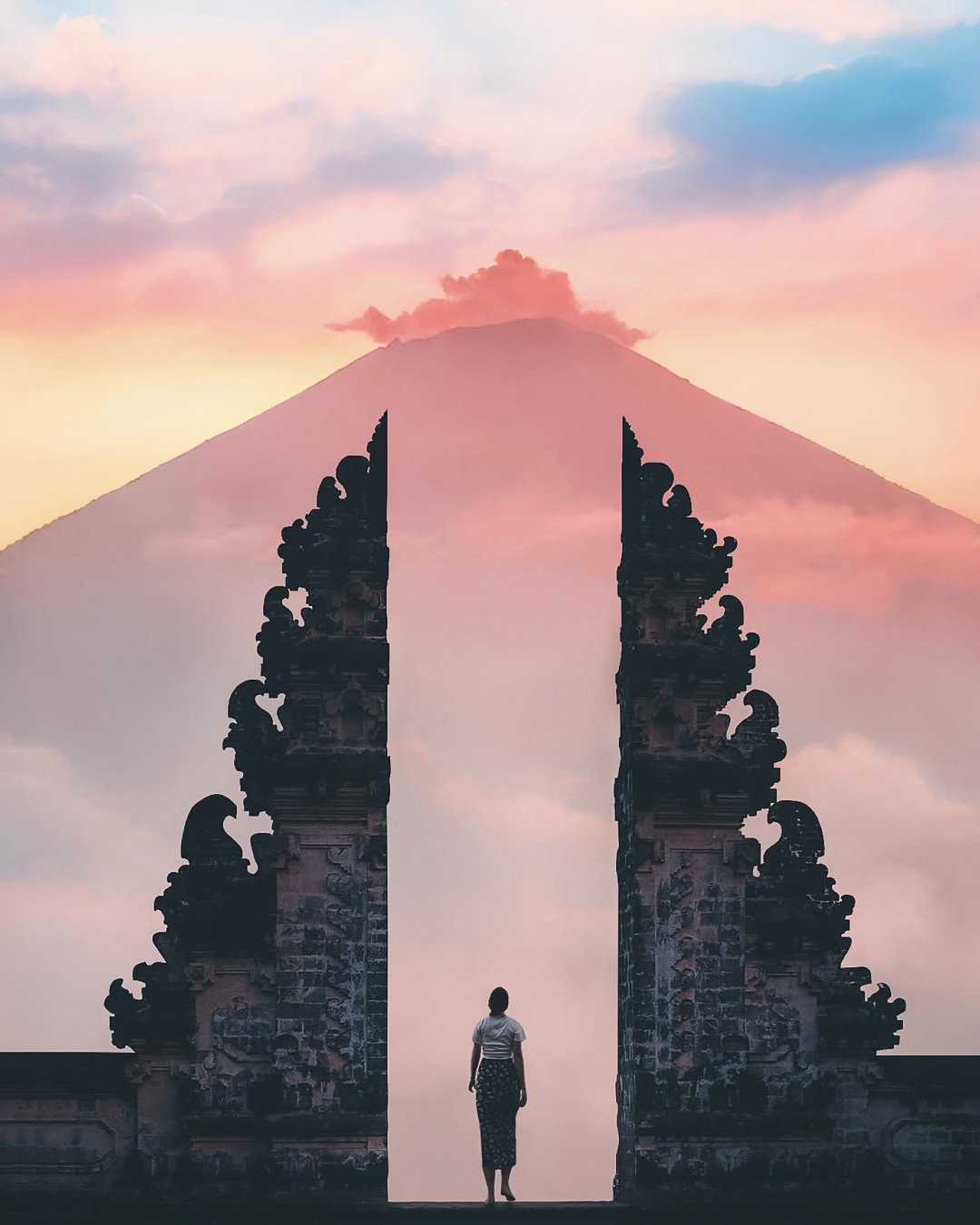Epic Patung Kambakarna Laga is One of Bali’s Spooky Statues
Indonesian Name: Patung Kambakarna Laga
Patung Kambakarna Larga Monument | Image: Abdelrahman Ismail
Table of Contents Show
Visit with a tour
Introduction
The giant Kambakarna sculpture towers above the landscape of the Bali Botanic Garden, so large he looks as though he might come to life and crush you beneath his foot. A colossal figure made of concrete and stone, he is proud and strong, his sword resting on one shoulder as he dances on the heads of the seven demonic brothers who attacked Lord Shiva in an attempt to win over his wife.
The sculpture is so large that you can see it from miles around, a constant reminder of Indonesian mythology and culture. The luscious green grass is crushed under the weight of each step, and the white paint used to highlight the muscles in his body is fresh and bright. Patung Kambakarna Laga serves as a symbol for the Balinese culture and a popular tourist attraction for visitors who come to see the towering statue and learn about its significance as part of Indonesian culture.
Address
P5C3+CJQ, Jl. Kebun Raya Eka Karya, Candikuning, Kec. Baturiti, Kabupaten Tabanan, Bali 82191, Indonesia (See on Google Maps)
Location
Patung Kambakarna Laga is located in the Bali Botanic Garden at Candikuning, Baturiti, Tabanan Regency, which is about 2 hours drive from the center of Denpasar and the nearest airport.
Address & Phone Number of Nearest Hospital for Emergency
The nearest hospital is RSUP Sanglah, located at Jl. Kesehatan Selatan No.1, Denpasar Tim., Kota Denpasar, Bali 80232, Indonesia, Tel: +62 361-227600
What about travel cover? It’s a good idea to cover your visit in case of an accident and to cover the high cost of medical treatment in Bali.
Three Key Reasons To Visit
1. To see an impressive and unique statue: Patung Kambakarna Laga is one of the largest statues in Bali, it's unique and impressive to see in person.
2. To learn about Balinese mythology: The statue depicts the legendary giant Kambakarna, who plays an important role in Balinese Hindu mythology.
3. To appreciate Balinese culture and tradition: The statue serves as a symbol of Balinese culture and tradition, and it's a perfect spot to understand and appreciate the culture.
History, Myths and Legends
The giant statue is based on the legendary giant Kambakarna from the Hindu epic Ramayana, who was the younger brother of the king of Lanka, Ravana. Kambakarna was known for his extraordinary strength and size, and his role in the war against Lord Rama. In Balinese Hinduism, he is often associated with the power of protection and security. Many Balinese have tattoos in red ink depicting Kambakarna seated on a throne. In it, he is depicted as a clear-eyed giant with a massive jaw and rolling muscles. His skin is copper-colored, his mouth is wide open as if bellowing in anger and his powerful hands grasp ancient weapons. Many statues of him exist in towns around Bali, and in some cases he is given prominence when placed on the front of temples or shrines.
What To Expect When Visiting
When visiting Patung Kambakarna Laga, the towering, solid white statue of the mythological figure Kambakarna stands out among its surroundings. Measuring 45 meters high, this statue is an impressive work of art, carved from stone and polished to a shine. While admiring the statue itself is a popular pastime for visitors to the site, they can also learn about Balinese mythology and culture and appreciate the Balinese tradition by exploring the surrounding gardens. The site has long been a place to which locals have brought offerings to Kambakarna and other mythological figures, and nearby they can also enjoy the peaceful environment.
Photo Opportunities and Tips
Patung Kambakarna Laga offers visitors a variety of opportunities for photography. Visitors are encouraged to take photos of the statue, as well as the surrounding gardens and the beautiful view of the rice fields. It's recommended to take photos during the daytime, as the statue is not well-lit at night.
What Visitors Say They Liked About Visiting
Many visitors have said that they loved the unique and impressive statue, as well as the opportunity to learn about Balinese mythology. They also appreciate the peaceful environment and the chance to take beautiful photos.
What Visitors Say They Did Not Like About Visiting
Some visitors have mentioned that the statue can be a bit difficult to find, as it's located a bit off the beaten path. Others have mentioned that the statue is not well-lit at night, making it difficult to see in the evening.
How Accessible is it for The Elderly, Children and Those With Mobility Issues?
Patung Kambakarna Laga is accessible for elderly and children but can be challenging for those with mobility issues. The statue is located on a flat surface and the garden area is paved, but there are some uneven surfaces and steps leading to the statue. There is no wheelchair access available.
Safety Tips When Visiting
Visitors should be aware of their belongings and keep them in a safe place while visiting the attraction. Visitors are also advised to be respectful of the statue and the surrounding area, and to dress appropriately by covering their shoulders and legs.
Typical Amount of Time to Allocate for a Visit
Visitors typically spend around 1-2 hours at Patung Kambakarna Laga. This gives enough time to see the statue, explore the surrounding gardens and take photos.
Food and Drink Options Nearby
There are local warungs (food stalls) and small restaurants in the area offering traditional Balinese dishes, as well as more international cuisine. Visitors can also find local street vendors selling snacks and drinks in the area.
Conclusion
Patung Kambakarna Laga is a monumental sculpture located in Candikuning, Baturiti, Tabanan Regency in Bali, Indonesia. The statue depicts the legendary giant Kambakarna from Hindu mythology and serves as a symbol of Balinese culture and tradition. Visitors can expect to see an impressive and unique statue, learn about Balinese mythology and culture and appreciate the Balinese tradition. Visitors should be prepared for the statue being located off the beaten path and be aware of safety precautions and accessibility. The typical amount of time allocated for a visit is around 1-2 hours.

















